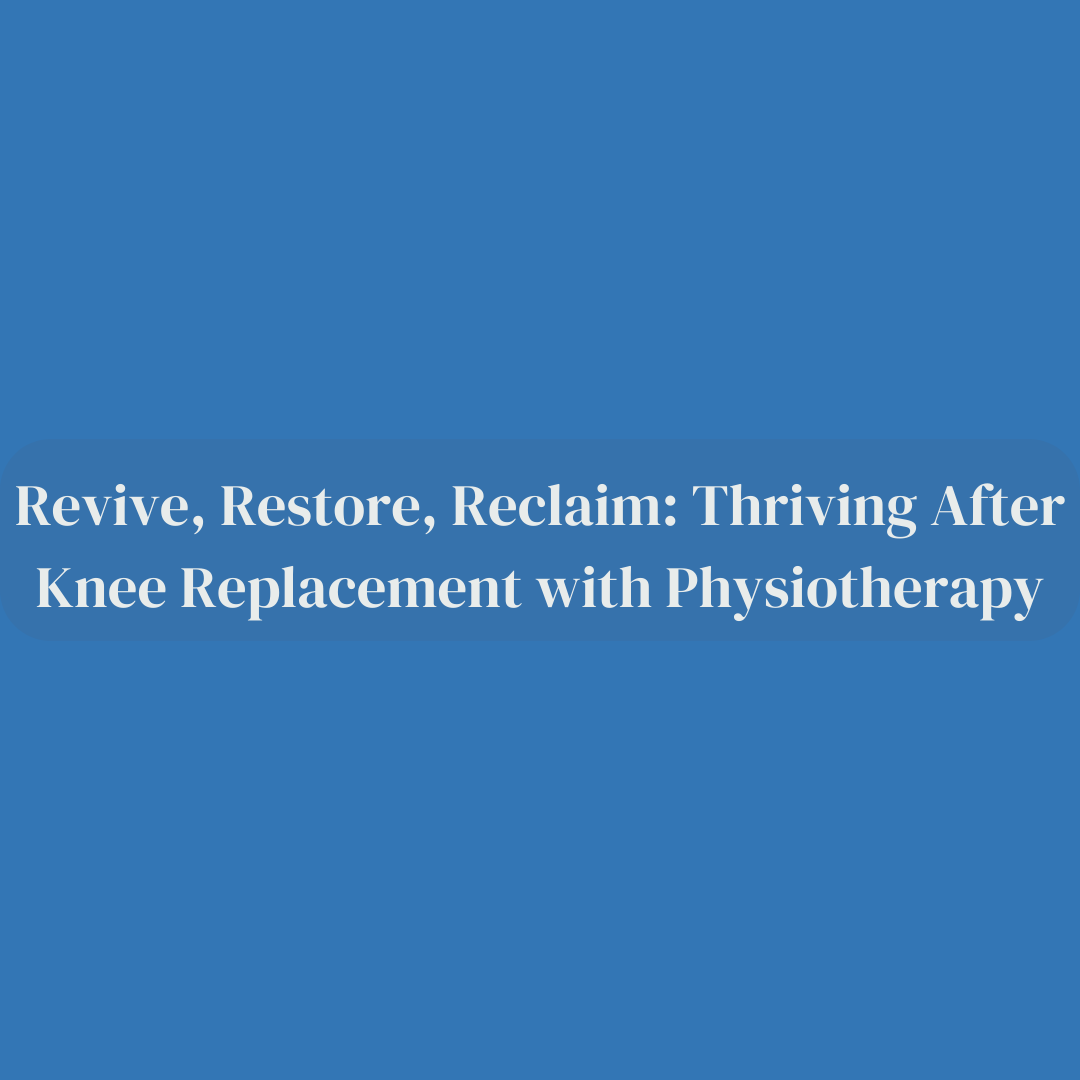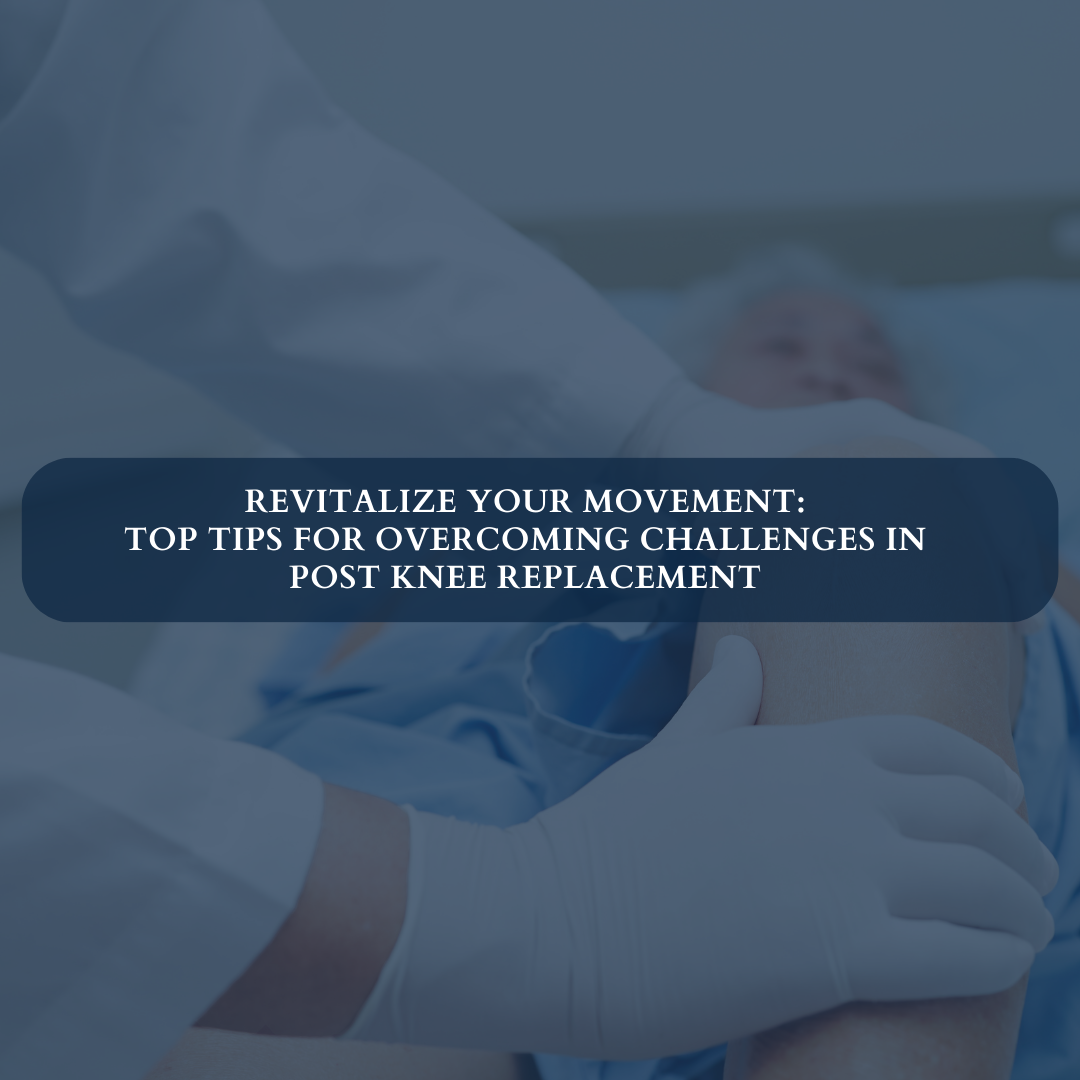Introduction
In the realm of orthopedic advancements, knee replacement surgery has become a beacon of hope for those suffering from debilitating knee conditions. However, the journey doesn’t end on the operating table. Post Knee Replacement , a crucial aspect of recovery lies in physiotherapy. This article delves into the transformative impact of physiotherapy in reviving mobility, restoring strength, and reclaiming a vibrant life after Post knee replacement.
Understanding Knee Replacement Surgery
The Need for Knee Replacement
Knee replacement surgery becomes a viable option when conservative treatments no longer provide relief. This procedure is recommended for individuals grappling with severe knee pain, stiffness, and limited mobility due to conditions like osteoarthritis, rheumatoid arthritis, or traumatic injury. By replacing damaged joint surfaces with artificial components, knee replacement aims to restore function and alleviate pain, offering a newfound lease on life.
Surgical Procedure Demystified
Delving into the intricacies of knee replacement surgery, this section sheds light on the step-by-step process. From pre-operative preparations to the actual surgery itself, readers will gain insight into what to expect. Key components, such as the removal of damaged cartilage and bone, and the placement of the prosthetic components, are explained in a clear and accessible manner, demystifying the surgical journey.
Recovery Phase: Initial Challenges and Precautions
Post-surgery, the initial recovery phase is crucial. Here, readers will discover the common challenges individuals face in the first few weeks. This includes managing pain, swelling, and adjusting to limited mobility. Additionally, important precautions and guidelines for a safe recovery are outlined. From recommended exercises to post-operative care, this section serves as a roadmap for navigating the early stages of the recovery journey.
The Role of Physiotherapy in Post-Operative Recovery
Early Mobilization: A Foundation for Success
Early mobilization after knee replacement surgery sets the stage for a successful recovery. This section illuminates the significance of beginning physiotherapy promptly. Readers will gain an understanding of the carefully designed exercises and movements aimed at preventing stiffness, enhancing circulation, and jumpstarting the healing process. Early mobilization is not only instrumental in regaining range of motion but also in expediting the return to normal activities.
Customized Exercise Regimens: Tailored for You
This section delves into the personalized nature of physiotherapy post-knee replacement. Readers will discover how physiotherapists craft individualized exercise regimens based on factors like age, overall health, and the specific surgical procedure. From gentle stretches to targeted strengthening exercises, this tailored approach ensures that each patient’s unique needs and goals are addressed, ultimately leading to a more effective and efficient recovery.
Pain Management: Regaining Comfort and Confidence
Pain management is a pivotal aspect of post-operative recovery. This section explores the techniques and strategies employed by physiotherapists to alleviate discomfort. Readers will gain insights into modalities such as heat therapy, gentle massage, and controlled movements designed to ease pain and promote relaxation. By actively participating in pain management techniques, individuals can regain confidence in their body’s ability to heal and recover.
Range of Motion: From Restricted to Remarkable
Regaining full range of motion is a primary objective of post-operative physiotherapy. This section outlines the progressive exercises and techniques employed to gradually increase flexibility. Readers will learn about passive and active range of motion exercises that target specific muscle groups, facilitating the return to normal activities. By systematically working towards improved range of motion, individuals can reclaim mobility and independence in their daily lives.
Building Strength and Stability
Targeted Muscle Strengthening Exercises
This section delves into the importance of targeted muscle strengthening in the post-knee replacement journey. Readers will discover specific exercises designed to fortify the muscles surrounding the knee joint. From quadriceps to hamstrings and calf muscles, each targeted exercise plays a crucial role in providing stability and support to the newly replaced knee. Through consistent practice, individuals can experience a noticeable improvement in strength, enhancing their overall mobility.
Balance Training: Finding Equilibrium Anew
Regaining balance is a key milestone in the recovery process after knee replacement surgery. This section introduces readers to a series of balance-enhancing exercises and techniques. Physiotherapists employ specialized equipment and strategic movements to challenge and improve balance. By gradually retraining the body’s proprioceptive abilities, individuals can regain confidence in their stability, ultimately reducing the risk of falls and further injuries.
Functional Movements: Bridging the Gap to Daily Life
This section focuses on the transition from targeted exercises to practical, everyday movements. Readers will learn how physiotherapists guide patients in performing functional activities that mimic real-life scenarios. From standing up from a chair to walking and ascending stairs, these exercises bridge the gap between rehabilitation and resuming daily activities. By integrating these functional movements, individuals can confidently navigate their day-to-day routines, ultimately achieving a higher level of independence and self-sufficiency.
Beyond the Physical: Addressing Emotional Well-being
Coping with Post-Surgery Adjustments
Navigating the emotional aspects of recovery is as crucial as the physical rehabilitation process. This section delves into the common emotional adjustments individuals may face post-knee replacement surgery. Readers will find insights into coping strategies and techniques for managing feelings of frustration, impatience, and even moments of doubt. By acknowledging and addressing these emotions, individuals can foster a positive mindset that supports their overall recovery journey.
Celebrating Small Wins: Tracking Progress
Recognizing and celebrating small victories is a cornerstone of post-operative emotional well-being. This section highlights the importance of setting achievable milestones and tracking progress. Readers will learn how even seemingly minor accomplishments contribute to a sense of achievement and motivation. By acknowledging progress, individuals can maintain a positive outlook and stay committed to their recovery goals.
Professional Guidance and Emotional Support
In this section, readers will discover the invaluable role of healthcare professionals and support networks in addressing emotional well-being. Physiotherapists, along with other healthcare providers, play a crucial role in offering guidance and emotional support throughout the recovery process. Additionally, the importance of seeking out a supportive community or engaging in peer groups is emphasized. These networks provide a space for individuals to share experiences, offer encouragement, and find solace in knowing they are not alone on this journey.
Conclusion
In the realm of knee replacement, physiotherapy emerges as the unsung hero, steering individuals towards a life of renewed vitality. Through a strategic blend of exercises, emotional support, and lifestyle adjustments, one can not only recover but thrive post-surgery. The journey may have begun with a knee replacement, but it culminates in a holistic revival of mind, body, and spirit.
Ready to explore your options for chiropractic and physiotherapy? Contact SwastyaPhysio today to schedule a consultation and discover the best path to your wellness journey. We’re here to support your health every step of the way.
Banaswadi | HBR layout | Kalyan Nagar | Kammanahalli | Horamavu | Hennur
Frequently Asked Questions (FAQs)
How soon should I start physiotherapy after knee replacement surgery?
It’s advisable to start physiotherapy within a few days of surgery, under the guidance of your healthcare provider.
Is physiotherapy painful after knee replacement?
Physiotherapy aims to alleviate pain and discomfort. While you may experience mild discomfort during exercises, it should not be painful. Always communicate your comfort level with your physiotherapist.
Can I do physiotherapy at home, or is clinical supervision necessary?
While some exercises can be done at home, initial sessions should be supervised by a qualified physiotherapist to ensure correct technique and safety.
How long does it take to see significant progress with physiotherapy?
The rate of progress varies for each individual. Consistency and adherence to your exercise regimen play a crucial role in achieving optimal results.
Are there any specific dietary recommendations post-knee replacement surgery?
Are there any specific dietary recommendations post knee replacement surgery?




